Contributions to birdwatching
From 1996 to 2014, he lived in northern Patagonia, where was director of the Centre for Ornithology Neuquén from Universidad Nacional del Comahue. He has made several contributions to the Ornithology, including the discovery of 2 new species for Argentina: The Tenca ( Mimus thenca ) and the Slender-billed Parakeet Enicognathus leptorhynchus
Since 1996 dictates Birding courses in different locations in Argentina and Chile. He has participated as an honorary advisor of national and provincial governments, representing the country in meetings held in other continents (USA, England, etc.). In 2008, he chaired the XII Argentina Ornithological Meeting. In 2010, along with Tito Narosky wrote the Checklist of Birds of Argentina.
His biggest contribution, however, could be the impact on bird watching in South America. From 2008, he has worked on the development and integration of birding in South America and is currently the Chairman of the Organizing Committee of the South American Bird Fair, the main point of contact between the birders across the continent.
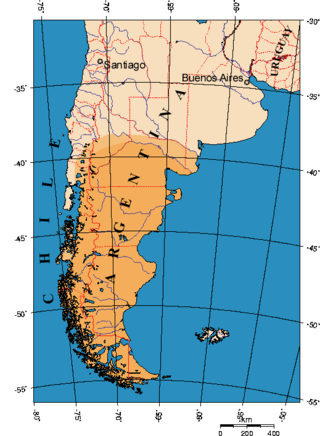
Patagonia is a geographical region that encompasses the southern end of South America, governed by Argentina and Chile. The region comprises the southern section of the Andes Mountains with lakes, fjords, temperate rainforests, and glaciers in the west and deserts, tablelands, and steppes to the east. Patagonia is bounded by the Pacific Ocean on the west, the Atlantic Ocean to the east, and many bodies of water that connect them, such as the Strait of Magellan, the Beagle Channel, and the Drake Passage to the south.

Argentina is divided into twenty-three federated states called provinces and one called the autonomous city of Buenos Aires, which is the federal capital of the republic as decided by the Argentine Congress. The provinces and the capital have their own constitutions and exist under a federal system.

Neuquén is a province of Argentina, located in the west of the country, at the northern end of Patagonia. It borders Mendoza Province to the north, Rio Negro Province to the southeast, and Chile to the west. It also meets La Pampa Province at its northeast corner.
Neuquén is the capital city of the Argentine province of Neuquén and of the Confluencia Department, located in the east of the province. It occupies a strip of land west of the confluence of the Limay and Neuquén rivers which form the Río Negro, making it part of the ecoregion of Alto Valle del Río Negro. The city and surrounding area have a population of more than 340,000, making it the largest city in Patagonia. Along with the cities of Plottier and Cipolletti, it is part of the Neuquén – Plottier – Cipolletti conurbation.

Francisco Pascasio Moreno was a prominent explorer and academic in Argentina, where he is usually referred to as Perito Moreno. Perito Moreno has been credited as one of the most influential figures in the Argentine incorporation of large parts of Patagonia and its subsequent development.
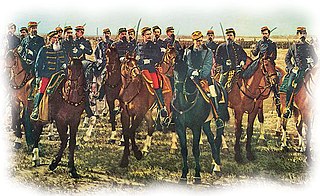
The Conquest of the Desert was an Argentine military campaign directed mainly by General Julio Argentino Roca during the 1870s and 1880s with the intention of establishing dominance over Patagonia, inhabited primarily by indigenous peoples. The Conquest of the Desert extended Argentine territories into Patagonia and ended Chilean expansion in the region.
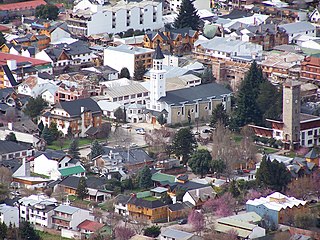
San Martín de los Andes is a city in the south-west of the province of Neuquén, Argentina, serving as the administration centre of the Lácar Department. Lying at the foot of the Andes, on the Lácar lake, it is considered one of the main tourism destinations in the province. The National Route 40 runs to the city, connecting it with important touristic points in the south of the province, such as Lanín and Nahuel Huapí national parks.

The Tehuelche people, also called the Aónikenk, are an Indigenous people from eastern Patagonia in South America. In the 18th and 19th centuries the Tehuelche were influenced by Mapuche people, and many adopted a horseriding lifestyle. Once a nomadic people, the lands of the Tehuelche were colonized in the 19th century by Argentina and Chile, gradually disrupting their traditional economies. The establishment of large sheep farming estates in Patagonia was particularly detrimental to the Tehuelche. Contact with outsiders also brought in infectious diseases ushering deadly epidemics among Tehuelche tribes. Most existing members of the group currently reside in cities and towns of Argentine Patagonia.
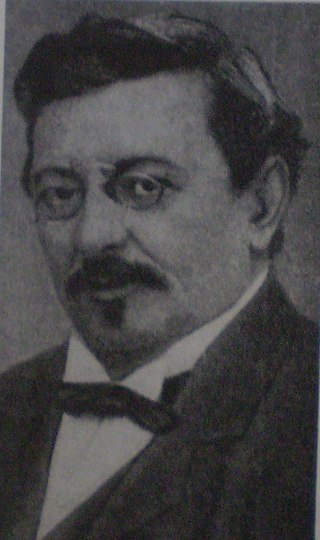
Eduardo Ladislao Holmberg was an Argentine natural historian and novelist, one of the leading figures in Argentine biology. Together with Florentino Ameghino he undertook the inventory of Argentine flora and fauna, and explored all the ecoregions in the country, summarizing for the first time the biodiversity of its territory. The son of botanical aficionado Eduardo Wenceslao Holmberg and grandson of the Baron Holmberg, Holmburg accompanied Argentine Libertador Manuel Belgrano on his campaigns and introduced the cultivation of the camellia to Argentina. As director of the Buenos Aires Zoological Garden he greatly developed its scientific aspect, publishing booklets and providing printed media for a learned appreciation of its contents. He also directed the Natural History Cabinet of the University of Buenos Aires and published the standard reference works on botany and zoology used in his country for most of the 20th century.
The region of the Beagle Channel, explored by Robert FitzRoy in the 1830s, was one of the last to be colonized by Chile and Argentina. The cold weather, the long distances from other inhabited regions, and the shortage of transport and subsistence, kept it far from the governmental task.

The following outline is provided as an overview of, and introduction to Argentina:

On 22 July 1971 Salvador Allende and Alejandro Lanusse, the Presidents of Chile and Argentina, signed an arbitration agreement. This agreement related to their dispute over the territorial and maritime boundaries between them, and in particular the title to the Picton, Nueva and Lennox islands near the extreme end of the American continent, which was submitted to binding arbitration under the auspices of the United Kingdom government.
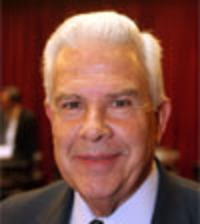
Horacio Lores is an Argentine politician of the Neuquén People's Movement (MPN). He sat in the Argentine Senate representing Neuquén Province from 2007 to 2013.

Native Argentines, also known as Indigenous Argentines, are Argentines who have predominant or total ancestry from one of the 39 groups of indigenous peoples officially recognized by the national government. As of the 2022 census [INDEC], some 1,306,730 Argentines self-identify as indigenous or first-generation descendants of indigenous peoples.
The Colloncuran age is a period of geologic time within the Middle Miocene epoch of the Neogene, used more specifically within the SALMA classification in South America. It follows the Friasian and precedes the Laventan age.

Chimpay is a municipality in Río Negro Province in Argentina. It lies on the National Route 22 in the Mid Valley of the Río Negro.
Silvia N. Blumenfeld is an expert on mycology. From 1986 to 2004, she was a Professor of Mycology and Biotechnology of Filamentous Fungi at the National University of Comahue, in Río Negro, Argentina. She emigrated to Israel in 2002, where she became the curator of the Tel Aviv University fungi collection, specializing in medicinal mushrooms. She has over 50 articles, books, and patents to her name, and has received academic honours. In 1995, she was awarded the Argentine National 'José Antonio Balseiro' Prize for her work.

Tito (Samuel) Narosky is an Argentine ornithologist and writer. Of the 20 books he has authored or co-authored, Birds of Argentina and Uruguay, a Field Guide is the best known, with over 40,000 copies sold.

The South American Birdwatching Fair or Birdwatching Congress is an annual event for birdwatchers, held every year in a different country of the continent. It is recognized by many to be a popular meeting event for birdwatchers that occurs annually in South America, attracting people from all over the world due to it being the largest event of its kind.
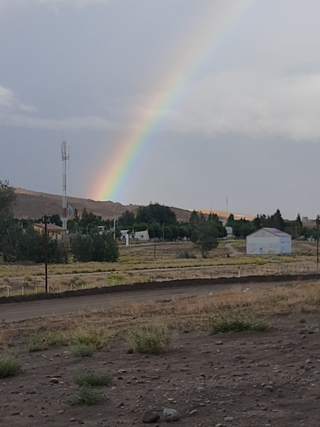
The Collón Curá Formation is a Middle Miocene fossiliferous geological formation of the southern Neuquén Basin in northwestern Patagonia and the western Cañadón Asfalto Basin of central Patagonia, Argentina. The formation crops out from the southern Neuquén Province, the western Río Negro Province to the northern Chubut Province.
















